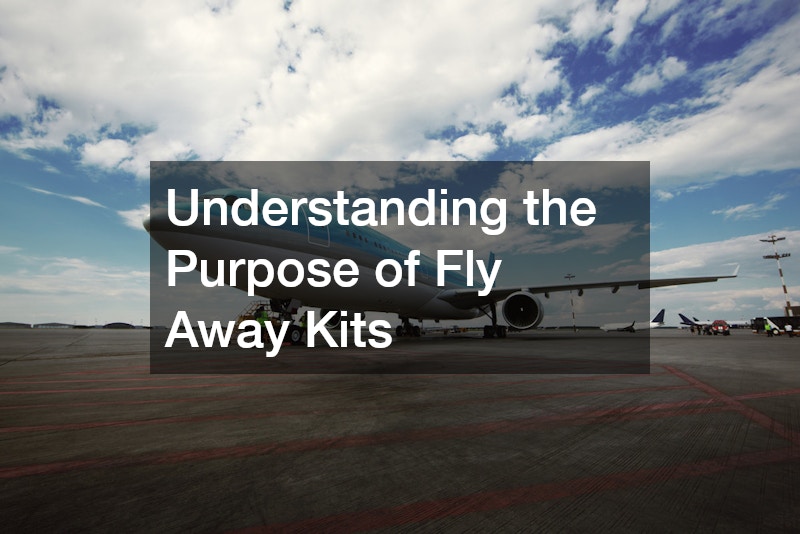In this article, we explore the concept of fly away kits, explaining their relevance and importance across various industries.
What is a Fly Away Kit?
Definition and Components
A Fly Away Kit is a pre-packaged set of tools, equipment, and supplies designed for rapid deployment and operational readiness. Its components typically include communication devices, first aid essentials, and other specialized tools depending on the intended purpose.
The concept of a Fly Away Kit is rooted in ensuring mobility and ease of transportation for quick response scenarios. These kits may also include necessities such as personal protective equipment and basic repair tools.
Having a well-rounded Fly Away Kit is crucial for organizations that operate in unpredictable environments. It ensures that team members are equipped with everything they need for effective performance during critical missions.
Industries Utilizing Fly Away Kits
The aviation industry is a primary user of Fly Away Kits, ensuring that flight crews and maintenance teams have the necessary tools and supplies on hand. In disaster management, these kits are indispensable for the rapid deployment and setup of relief operations.
Military operations also consistently rely on Fly Away Kits for seamless logistics and mission success. In the medical field, mobile units utilize customized kits to set up temporary clinics during emergencies.
Each industry values the adaptability of Fly Away Kits, customizing their contents to suit operational demands. This flexibility allows for cross-sectoral application, increasing their utility and effectiveness.
Why are Fly Away Kits Important?
Operational Efficiency
Fly Away Kits significantly enhance operational efficiency by reducing preparation time in urgent situations. They enable teams to be immediately ready to address specific tasks without delay.
The standardized nature of these kits ensures that personnel are familiar with their contents, thereby minimizing downtime. This familiarity contributes to streamlined operations and improved mission outcomes.
Furthermore, the rapid access to essential tools and resources means that tasks can be executed swiftly, maintaining high productivity levels even in high-pressure environments. This efficiency is critical in industries where time is of the essence.
Cost-Effectiveness and Resource Management
Fly Away Kits are a cost-effective solution, reducing the need for purchasing emergency supplies in spontaneous situations. By having materials prepared and packaged, organizations can better allocate resources and manage budgets.
These kits help organizations avoid the expenses associated with last-minute procurement of necessary equipment. Moreover, they allow for effective resource management by ensuring that valuable tools and supplies are preserved and utilized well.
By preventing redundant purchases and ensuring equipment is utilized, Fly Away Kits contribute to sustainability and better financial forecasting. Their strategic importance in budget management is increasingly recognized across sectors.
How are Fly Away Kits Used in Emergencies?
Emergency Response Scenarios
Fly Away Kits play an essential role in emergency response, serving as the first line of support during crises. They provide the vital tools and materials required to stabilize situations swiftly.
In natural disasters, these kits facilitate the rapid setup of command centers and supply stations. Their immediate availability supports quick decision-making and crisis mitigation efforts.
The kits’ contents are tailored to support a range of emergency scenarios, from communications to medical treatment. Their presence ensures that responders are equipped to handle whatever situation arises efficiently.
Lessons Learned from Past Emergencies
Examining past emergencies reveals the indispensable role of Fly Away Kits, highlighting their contribution to successful outcomes. Historical data show that preparedness, enabled by these kits, can significantly reduce response times.
Insights gleaned from previous crises have informed the design and stocking of Fly Away Kits, ensuring they evolve and improve with each iteration. Organizations have learned that adaptability is key to maintaining relevance in these kits.
Practical lessons from emergencies underscore the need for continuous kit evaluation and adaptation. These lessons guide the development of guidelines for effective kit use in future emergencies.
What Should be Included in a Fly Away Kit?
Essential Tools and Equipment
Essential tools in a Fly Away Kit typically include communication devices, such as radios and satellite phones, ensuring connectivity in remote areas. Medical supplies, including first aid kits, are standard to attend to immediate health needs.
Power sources, such as portable chargers and batteries, are critical for sustaining operations in power-deficient zones. Each component is carefully selected to provide maximum utility in diverse operational contexts.
Tools like multi-tools, flashlights, and basic hand tools ensure that technical tasks can be addressed promptly. The right selection of equipment fosters self-reliance and operational efficacy.
Customization for Specific Needs
Fly Away Kits can be customized to meet the specific needs of varying operations, aligning contents with mission objectives. This customization ensures that the kits are highly relevant and purpose-driven.
For example, an aviation-focused kit may differ significantly from one designed for telecommunications, with each containing industry-specific tools. Customization enhances performance by providing tailored solutions for immediate needs.
Organizations often review and adapt kit contents to reflect changes in task requirements or technological advancements. This flexibility underscores their indispensable role in successful operation execution.
How to Maintain and Update Fly Away Kits?
Regular Maintenance Procedures
Regular maintenance of Fly Away Kits is essential to ensure readiness and effectiveness. Scheduled inspections check for expired or outdated items, ensuring all components remain viable.
Establishing a maintenance schedule facilitates the identification and replacement of any worn-out or defective items. Keeping kits in top condition ensures reliability when deployed.
Implementing standardized checklists aids in maintaining kit integrity and operational readiness. The consistent application of maintenance protocols enhances the kit’s lifespan and functionality.
Updating Kits with Technological Advances
As technology advances, Fly Away Kits should be reviewed and updated to incorporate the latest tools and innovations. Incorporating new technology helps maintain the kit’s relevance and efficiency.
Technology upgrades might include advanced communication gadgets, portable computing devices, and enhanced power solutions. Staying current with technological trends ensures the kit remains capable of meeting emerging challenges.
.


















